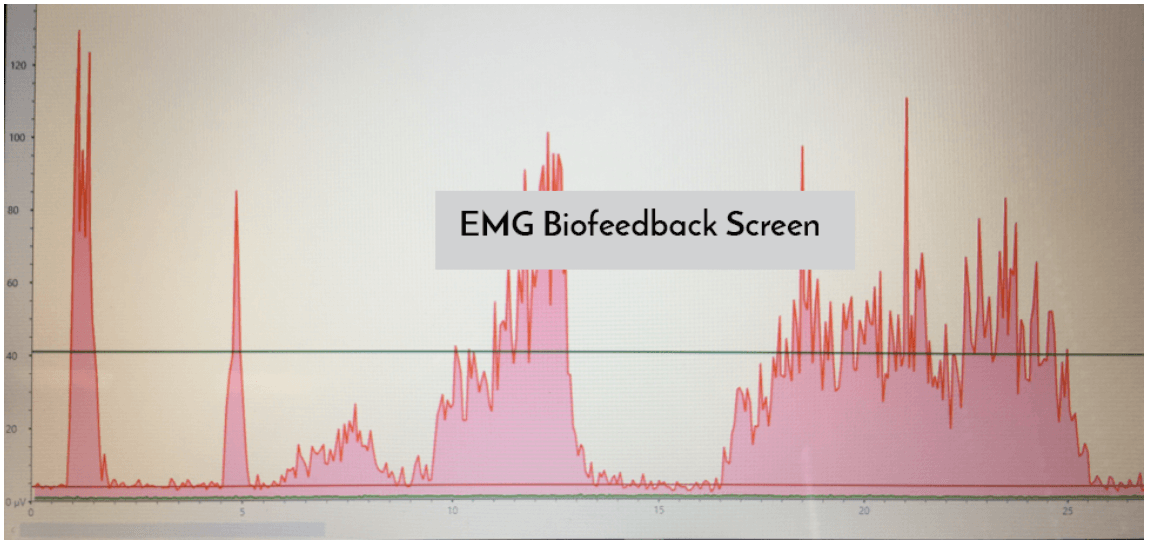What is EMG biofeedback and RTUS Imaging?
EMG Biofeedback for the Pelvic Floor
What is EMG biofeedback? How is EMG biofeedback used to measure engagement of the pelvic floor?
Surface electrodes (internal or external) placed by the physiotherapist detect muscle contraction and relaxation. The information picked up from the biofeedback unit is displayed on a screen for both you and your physiotherapist to view. Internal electrodes are either vaginal or rectal probes. External electrodes may be placed on either side of the anus. An advantage to external electrodes is that you can move or change position (e.g., to sitting or standing) without having to adjust your posture to hold the electrode in place, facilitating a more realistic scenario. EMG biofeedback is a safe modality with very few contraindications.
Real-Time Ultrasound Imaging
What is real-time ultrasound imaging?
Ultrasound can be used to create images of tissues inside the body (e.g. muscle, fat, fascia, organs, etc.). Sound waves with frequencies >20 000 Hz (a frequency higher than what is audible to humans, thus “ultra-sound”) are pulsed into the body using an ultrasound probe. These sound waves are reflected (or echoed) by body tissues. Different types of tissues will reflect the sound waves differently depending on the tissue’s composition. The echoes are picked up but the ultrasound machine and are displayed as an image on the screen.
This type of imaging can be very valuable when used in a rehabilitation setting. You can literally see the muscles working in real time. This is especially advantageous when training the deep muscles in the body including the pelvic floor and the deep abdominals/transversus abdominis.
Real-Time Ultrasound is a safe modality with very few contraindications.


